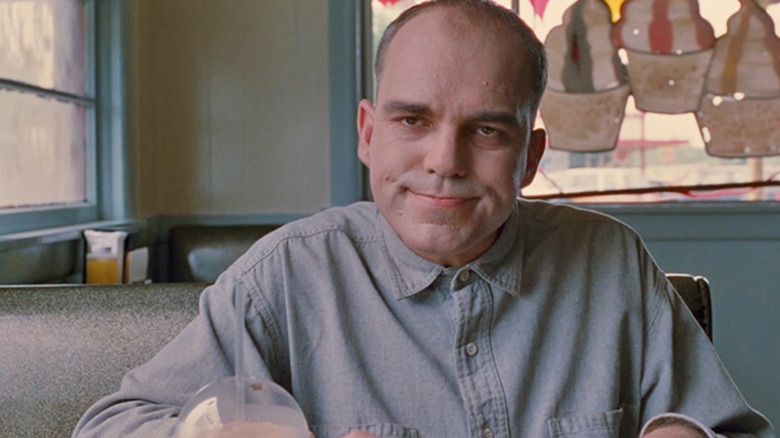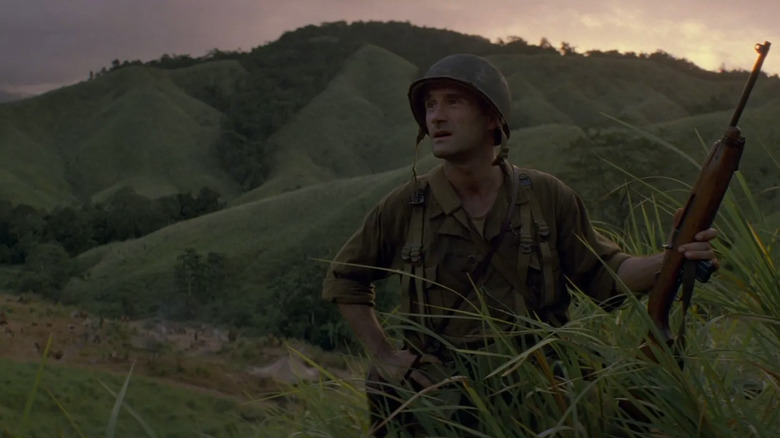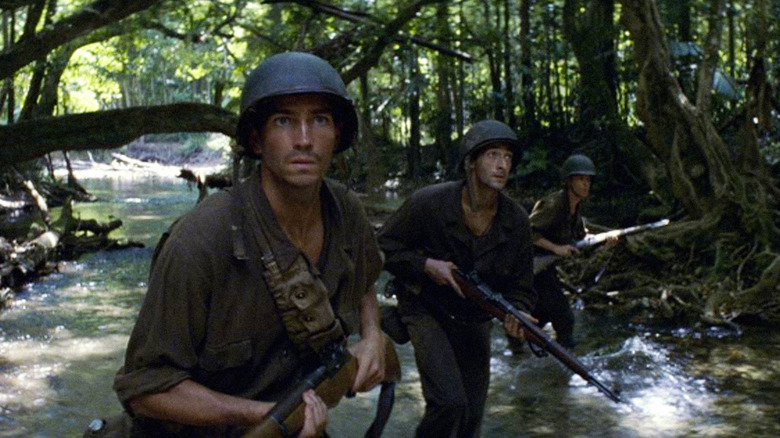Billy Bob Thornton Recorded Hours Of Voiceover For The Thin Red Line That Was Never Used
For any actor working with the visionary Terrence Malick, "surrender yourself to the vision" is something of an ongoing mantra. Since debuting with "Badlands" in 1973, Malick's process has become a polarizing topic of debate. The director shoots hundreds of hours of footage for each of his films, vexing performers, editors and even composers when it comes time to trim it all down to a coherent final product.
The drama behind the scenes of Malick's (anti) war epic "The Thin Red Line" is one of the more infamous examples of the director's challenging, mercurial filmmaking style. Producers spent eight arduous years getting the film off the ground, but by the time it was completed, Malick had driven composer Hans Zimmer to his mental limits, exhausted some of his most faithful collaborators, and ruffled huge feathers when it came to certain actors in his cast.
Great expectations
"Thin Red Line" may take place during the World War II Battle of Guadalcanal, but in true Malick fashion, the film is much more concerned with the intangible themes that made such a battle necessary. From the very beginning of the film, it's pretty clear that the director would rather confront man's need for war, whether it's inherently placed in all of us, and how it affects the "innocents" on the fringes of it.
Malick punctuates this exploration with a series of inner monologues: the voices of his cast take turns asking questions like "What's this war in the heart of nature?" and "How'd we lose that good that was given us?" One thought from Jim Caviezel merges seamlessly into another spoken by Ben Chaplin. It's hard to tell each speaker apart — each narration feels like a riff on the same idea — but that's probably by design, a part of Malick's whole "maybe all men share one big soul" argument.
It makes even more sense when you learn that Billy Bob Thornton was originally the only voice narrating "The Thin Red Line." The actor recorded a whopping three hours of material for the film, but Malick eventually chose to nix it in favor of the overlapping narration in the final product. Instead of one narrator, there would be eight.
All's fair in film and war
Thornton, thankfully, doesn't seem too miffed about his discarded role. In fact, he's one of the few actors jilted by Malick that hardly made a fuss at all. But there are plenty of stories — especially on the set of "Thin Red Line" — that speak to Malick's haphazard priorities. He is, after all, a director who prefers to find the film "in the edit," and it's this principle that led to the reduction of quite a few substantial roles.
Adrien Brody was shocked about his reduced role in "Thin Red Line" — the then little-known actor had been told he was the lead of the film, and he believed it until he finally saw the finished product. His role as it stands now is little more than a cameo, and he's not the only one enjoying less screentime: Mickey Rourke, Bill Pullman and Lukas Haas were removed from the film entirely.
In hindsight, these choices make rational sense for the story. Apparently, Brody's role as Corporal Fife was reduced in favor of Malick's interest in Caviezel's character. For all the betrayal that Brody (and many other actors) must feel, it likely wasn't personal. It was more in the service of creating a universal experience, finding that "shared soul" that connected the characters. And if there were too many characters, or one felt more prominent than the others, "The Thin Red Line" probably wouldn't be such a powerful film.


